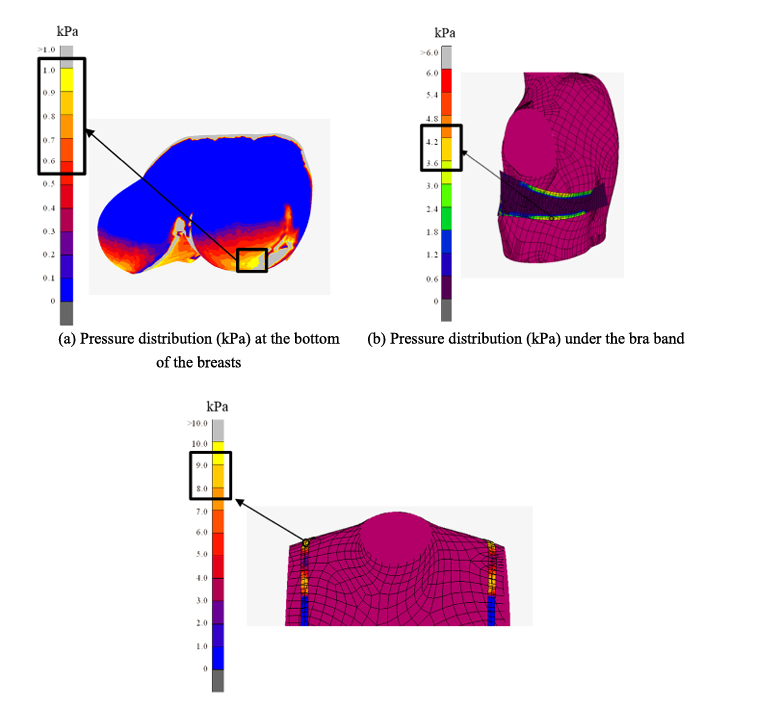Bra design experiences a long process of development including some key aspects like material selection, pattern making and grading. The design and development processes are highly complex, which consist of many pattern engineering stages, specialized technologies and multiple trial-and-errors. It is anticipated that a 3D bra design that incorporates information on the interaction between bra and breast can effectively improve the design process for optimal fit and comfort. In this paper, a novel personalized modeling system based on finite element (FE) contact model is first presented to simulate the breast-shaping effect and the pressure distribution of the skin exerted by a bra. The new knowledge can provide a basis for the computer-aided-design of well-fitting bras for the target customers. The FE body sub-models include a rigid torso and two soft breasts wearing a bra with or without an underwire. The geometry of the body was based on the 3D-scan data and the property of the breasts was considered a hyper-elastic Mooney–Rivlin model for simulating the deformation of the breasts. The simulation of bra wearing was performed by an FE contact model in a user-defined coordinate system. There were two main steps: (1) closing the shoulder straps and bra underband at the center back of the body, and (2) adjusting bra position using “virtual hands”. The simulation results showed that although the wireless bra exerted less pressure on the breast, the shaping effects in terms of lifting, gathering and protruding were more obvious in the underwired bra. This result is consistent with the actual bra-wearing. The effect of wireless bra on the breast deformation was three fifths of the effect of underwired bra and this relationship could be used to predict the deformation of breasts with different materials of underwire at the early stage of bra design. The relative errors between simulated results in terms of the breast deformation and pressure distribution with a fitting experiment on an underwire bra were less than 10%. The FE model developed in this study, therefore, can be used as fundamentals for various sensitivity analyses about different bra design features for predicting the deformation of the breast shapes and comfort pressure with reasonable accuracy.
Yu W.
Chen L.H.
Jiao W.Z.


